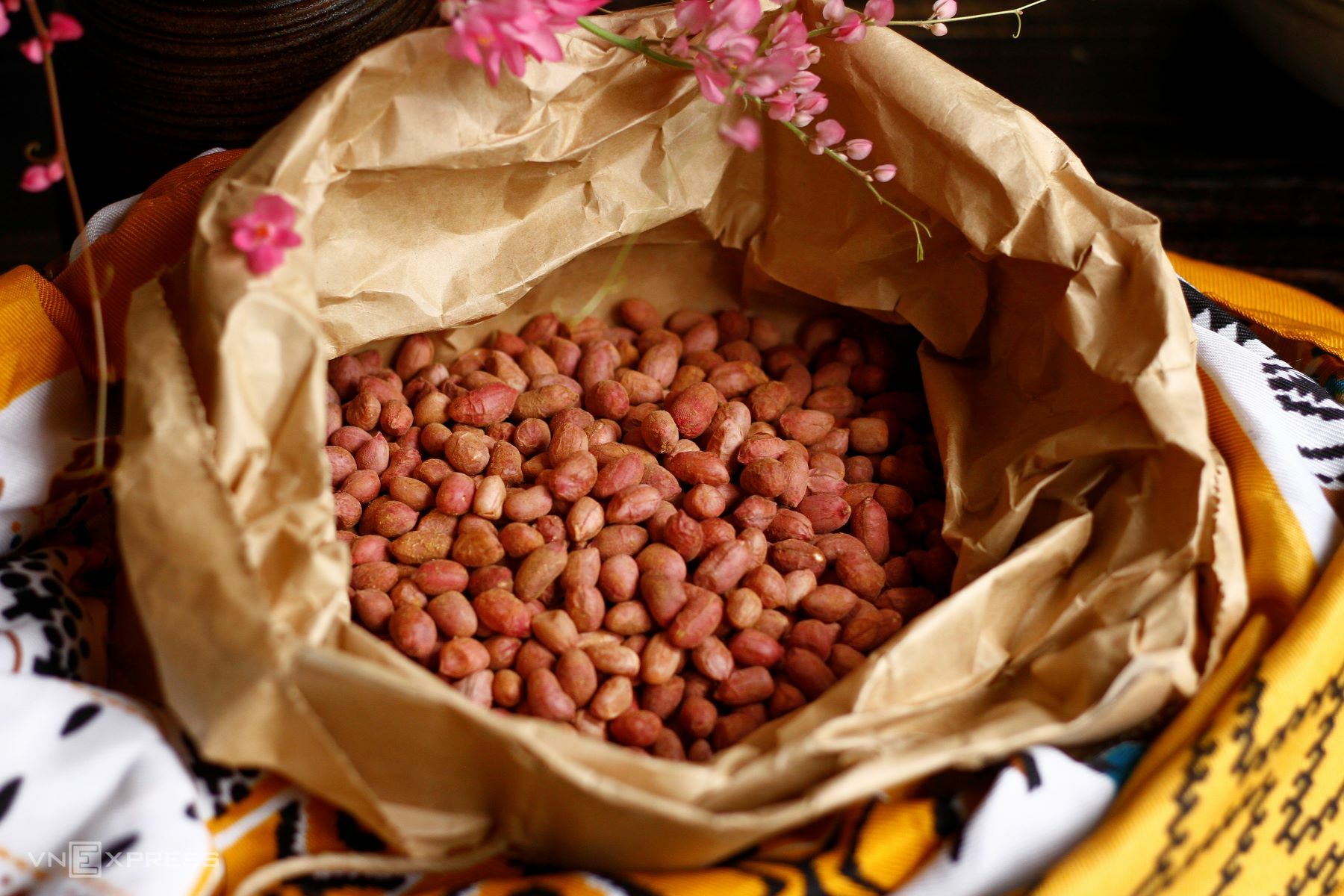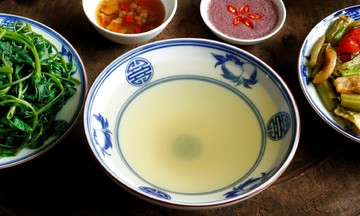Traditionally, home cooks roast peanuts in a cast iron skillet over medium-low heat until they hear a crackling sound. Then, the peanuts are wrapped in clean newspaper (or a cloth) and left to rest for about 30 minutes.
This traditional method allows the heat to distribute evenly, helping the peanuts release moisture from the kernels and shells. This transforms the peanuts from a slightly soft texture to a crispy, flavorful state without becoming dry or hard. The flavor also mellows, losing the harshness of freshly roasted nuts.
For salted roasted peanuts, the resting period allows the salt to adhere evenly, preventing it from falling off or being absorbed excessively, which would result in overly salty nuts.
 |
Resting the peanuts allows them to cook evenly and become more fragrant. Photo: Bui Thuy |
Resting the peanuts allows them to cook evenly and become more fragrant. Photo: Bui Thuy
Scientifically, roasting peanuts involves direct heat transfer between the peanuts and the hot pan. This evaporates water within the nuts, cooking the kernels and altering their protein structure.
However, peanuts are relatively large and have a shell, so the outer layer often reaches a high temperature (above 140°C) when removed from the heat. Meanwhile, the inner core cooks more slowly due to lack of direct contact with the heat source. If the peanuts are immediately removed from the pan, the inner part may not have time to fully cook, leading to a soft or uneven texture. Conversely, allowing the peanuts to rest in an insulated environment (newspaper, cloth, or areca sheaths) permits the slow heat transfer to continue. The heat from the shell continues to penetrate the core, allowing the nuts to cook through without burning.
Moreover, the remaining moisture escapes gradually, preventing sudden condensation and resulting in evenly dried, crispy, and fragrant peanuts. The residual heat also promotes the Maillard reaction, creating the characteristic aroma and nutty flavor. This is when the peanuts complete their cooking process using their own stored energy.
This phenomenon is similar to the "carry over cooking" principle discussed in culinary arts. Food continues to cook due to residual heat after being removed from the heat source, as heat from the outer layer (which has reached a high temperature) continues to transfer to the core.
In Eastern culinary theory, peanuts belong to the Wood element, representing foods that grow from the earth and are rich in nutrients. They have a warming nature and a nutty, savory flavor. Roasting involves the Fire element, transforming the peanuts from a yin (moist, raw) state to a yang (dry, cooked) state. However, excessive heat without a resting period can lead to burnt shells and dry kernels, potentially causing indigestion.
Letting the peanuts rest in clean newspaper, cloth, or areca sheaths is a traditional method of transitioning from dynamic to static, allowing the fire energy to subside and the inner essence to mature through residual heat. This is not merely a cooling step, but the final stage in achieving a harmonious balance: crispy on the outside, flavorful and fragrant on the inside, without excessive dryness.
In many Vietnamese cooking techniques, resting is an ancient method often overlooked by modern cooks. Fried rice tastes better with day-old rice (which has rested and dried slightly), stews develop richer flavors with resting periods, and even spring rolls benefit from a two-stage frying process with resting time in between. This small step reflects the sophistication of Vietnamese cuisine, emphasizing a gentle, balanced approach to cooking.
Bui Thuy












